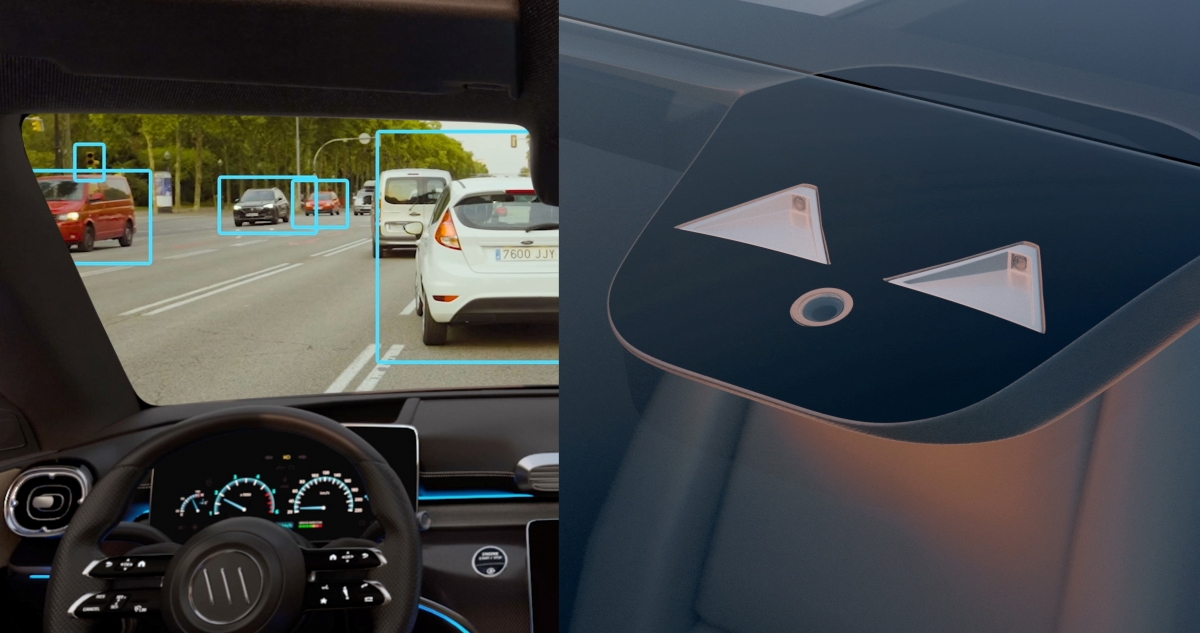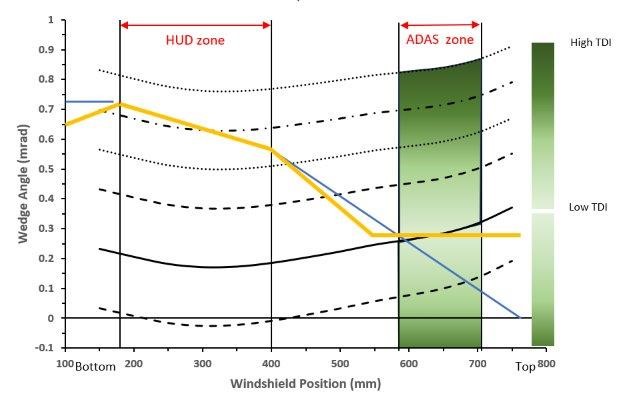
Saflex™ Horizon Vision
Enhanced visibility in ADAS and HUD
Saflex™ Horizon Vision advanced interlayer is the next generation of Eastman’s variable angle wedge PVB technology.
It can customize an extended set of profiles and angles, which enables it to:
- Meet multiple image separation requirements throughout the windshield
- Ensure image clarity in the driver HUD zone and the camera of the advanced driver-assistance systems (ADAS) zone
- Enhance visual comfort for more sophisticated HUD applications
Superior clarity for accuracy and reliability of ADAS
ADAS plays a crucial role in driver safety and supports the transition from conventional cars to advanced autonomous vehicles. An essential component is the front-sensing camera, often positioned behind the windshield.
To support efficient sensor fusion, advanced camera systems require stringent optical standards to avoid transmitted double image (TDI). TDI can greatly impact the camera zone near the top of the windshield, potentially compromising the accuracy and reliability of features like forward collision warning, automatic emergency brakes and pedestrian detection.
With Saflex Horizon Vision, the variable angle wedge can be tailored to minimize TDI and enable clarity and accuracy of visual information.

Visual comfort for more sophisticated HUD
Challenges related to image distortion, known as ghosting, may occur when separated planes of projection are in the near and far field zone with different focal points, requiring distinct wedge angles to meet specific ghosting requirements.
With Saflex Horizon Vision, the variable angle wedge reduces ghosting and enables improved visual clarity and comfort for HUD dual-plane applications.
Combine this advanced acoustic wedge solution with solar formulations for:
- Enhanced cabin experience: Quieter and more comfortable cabin experience, improving interaction with voice-activated devices and passenger conversations
- UV protection: Blocks over 99% of harmful UV radiation
- Solar control: Lowering interior vehicle temperatures for more cabin comfort
- Improved fuel efficiency and CO2 reduction: Lower cabin temperatures reduce the need for air conditioning, resulting in greater fuel efficiency and reduced carbon dioxide emissions.


